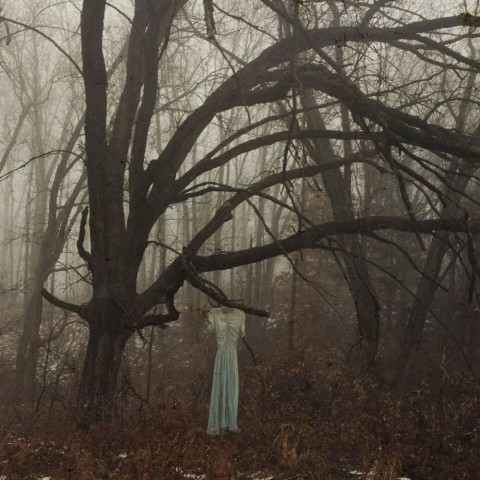Here is Emma Jane Watson in a drawer. Aged six months. White gown. White coffin. Little eyes closed as if the light from the flash is too brilliant to bear.
Here are Julie’s hands in the same drawer, pushing through lost smiles, forgotten eyes. Black and white photos of an old farmstead. A class dressed in uniform. A man off to war. Emma Jane Watson tucked between photos of a family on the church steps, a child with her dog. April 1, 1892. Aged six months.
Julie has come to this antique mall in search of old maps and what she has found are discarded memories. She looks up and suddenly women seem to pull themselves from every corner of this building. Women carrying babies in their bellies, on their shoulders, in slings across their chest. Each of those babies squirming. Each of them pulling at their mothers’ hair. Each of them sucking in breath after breath after breath after breath.
Yet here is this little one in black and white. Would the daffodils have been in bloom?
How long ago the mother of this child felt her heart become a shell of unbeating muscle or worse, to feel that muscle still beating each morning as if it did not recognize its own loss, the still child that once crawled reckless across the floor planks, gather her here before the camera to remember. In the act of forgetting we lose what we could once hold.
Emma Jane Watson is worth a quarter. The man off to war, another quarter. She can have the farmstead and the child with dog and all of this will cost a dollar. Julie nestles Emma Jane Watson in the center of her hand. Her heart is not capable of rescuing them all.
Emma Jane Watson curls at the corners. The indent of a mother’s thumb in her middle. How many hours belonged to holding this child? The years gone one after another and here the other children are grown and gone and their children are grown and gone and yet the mother sits with the baby and rocks the photograph and rocks the photograph and rocks the photograph.
This baby is quiet tonight.
At home her own reckless baby crawls with abandon, blocks in fists tossed at the dog, pushed into her cheekbone, little body rolling on the floor, little hands lost in her hair. Julie finds her thumb pressed to Emma Jane Watson’s middle. Aged six months. Eyes held tight against the light.
This baby belonged to someone and that someone is forgotten.
There is an hour of the night when her breathing baby wakes, when the newspaper van rolls through and while she nurses her soft-sucking child the newspapers land across the yards of each neighbor in a cadence, in an echo. Emma Jane Watson sleeps through the jagged baby cries of her living child, through the thumps of newspapers on the lawns. Julie touches her forehead, imagines the silk of her baby hair.
The basement overflows with baby gifts and among them is a silver frame. Little shoes tied in a bow, space in a heart shape between them. Here is Julie in this drawer, this box, hands among the blank baby books, the stacking blocks, the swaddling blankets, until she pulls the frame free.
Once this baby could only be soothed in the steady hold of her mother’s arms.
Emma Jane Watson fits the frame. Beneath the glass she is softened, the shadows in her room quieter. Julie brings the baby to work in her purse. Here is the photo of her breathing baby, and here is the photo of Emma Jane Watson. Within an hour someone has noticed, someone has asked, who’s baby is this? Women in an arc around her desk: who’s baby is this?
Perhaps she will pick the daffodils when they bloom.

Notes from Guest Reader Audra Kerr Brown
The terse, economical language of ‘Emma Jane Watson in a Drawer’ creates such beautiful tension between subject and narrative. It’s a story that begs to be read more than once.


 The SmokeLong Grand Micro Contest (The Mikey) is now an annual competition celebrating and compensating the best micro fiction and nonfiction online.
The SmokeLong Grand Micro Contest (The Mikey) is now an annual competition celebrating and compensating the best micro fiction and nonfiction online.